 |
|
CoCoRaHS
F L O R I D A
A Community Collaborative
Rain, Hail & Snow Network
|
|
|
|
 |
 |
 |
 |
 |
 |
 |
 |
 |
 |
 |
 |
 |
Due to the holidays and traveling (see below), I didn't get to go through the observer comments last month. I do want to say thank you to everyone that leaves a comment when making their report. The additional measurements and anecdotal information you provide can help with descriptions of a significant weather event, alert the NWS to potential flood conditions, let us know about drought impacts, or let us know how much you continue being a part of the program.
If you remember last month, I said I was going to be better about finding someone to check the gauge while I was out of town... Well, it's hard to find someone to do that when they shut down the university for Winter Break. Needless to say, the rain gauge had overflowed and looked rather disgusting when I returned. After a good scrubbing, it's back up and ready to get back to work- like me!
|
2,700 Miles and Back
Yes, I drove roughly 2,700 miles during my Winter Break this year. It was a fun trip that had me leaving Tallahassee, driving up to Maryland and Pennsylvania to visit some family and close friends, back south through Tennessee for the New Year and ending up back where it all started- 16 days later.
One of the highlights include, twirling around in flurries near Rocky Mount, North Carolina. It had been raining that morning, and I drove right through the rain/snow transition zone. Excited, I pulled the car into a rest area on I-95 and got out of the vehicle to enjoy the smell of snow. (Yes, I swear that snow has a smell!) While I didn't get any good pictures of the snow, I did get a screen capture of the radar off my phone to prove to everyone that I had indeed come across snow.
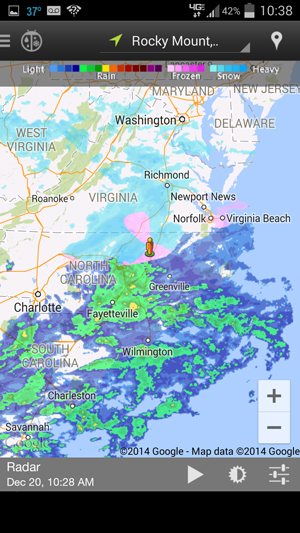
Temperatures were warm in the Mid-Atlantic this Christmas, and I know a few people were happy I brought the warmth with me from Florida, and some... not so much. A White Christmas wasn't in the cards this year, and after a week up in the MD and PA area, I headed down to Tennessee. This was the first time I have driven through the Smoky Mountains and from what I could see of it, it was beautiful. Heavy fog blanketed the valley and made it difficult to drive early one morning. Don't worry, I wasn't the one taking the pictures!
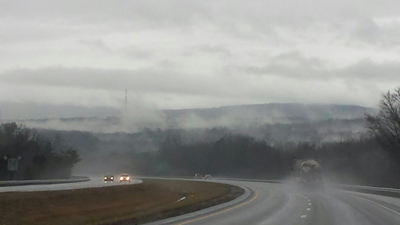 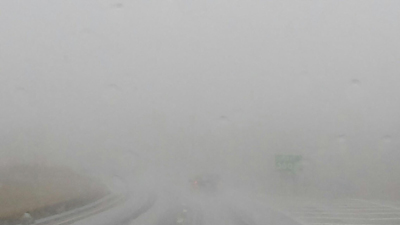
If you've got any pictures you took on your holiday travels, of the rainfall from the end of December, beautiful sunrises and sunsets, or anything else you'd like to share, please send them to me.
|
Fog, Mist and Condensation Reporting
We get asked throughout the year how condensation, mist and fog should be reported. My colleague and friend, Steve Hilberg, sent out this email to the Illinois observers a couple of weeks ago and I wanted to share it with you.
"Radar can often help determine if there is precipitation, but in low cloud/fog patterns a light mist will not show up on radar. If you can feel the mist hitting your face, or see tiny droplets hitting the windshield or on puddles on the ground, then that's precipitation and should be reported as a Trace if it's not measurable. If there is a measurable amount in the rain gauge then report that amount. In either case, be sure to include observation comments that describe the situation so those using your observation know what you are dealing with."
|
Quick Facts About December Observations
Registered Observers:
| 1,660 | Active Observers:
| 546 | Reports Submitted:
| 13,476 | Date of Most Reports:
| 463 on the 9th | Highest Rain Report:
| 8.39 on the 23rd (FL-LB-1) | | Number of Observer Comments: | 1,434 |
|
December Rains
A very localized portion of the Big Bend reported monthly rainfall totals well above normal, while the rest of Florida saw average rainfall during December near to below normal (Figure 1). Departures from normal roughly ranged from -2.16" to 4.88" (Table 1), though localized parts of Florida saw rainfall totals that were as much as 4.00" below normal to over 8.00" above normal (Figure 1). Tallahassee reported its wettest day in December since records started in 1892 on the 23rd when 7.44" of rainfall was recorded. 2014 was the 9th wettest year in Pensacola (83.17") and the 10th wettest year in Daytona Beach (63.77"). There were multiple 24-hour precipitation records broken for the month (Table 2).
Table 1. December precipitation totals and departures from normal (inches) for selected cities.

Table 2. Select daily rainfall records (inches) broken during December (Compiled from NOAA, NWS)
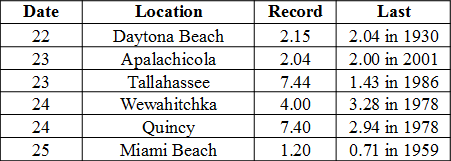
Figure 1. A graphical depiction of the monthly rainfall departure from normal (inches) for December is given in the figure below (courtesy of NOAA, NWS).
|
December CoCoRaHS Totals
Here are the CoCoRaHS rainfall totals for December from some select CoCoRaHS stations across the state.
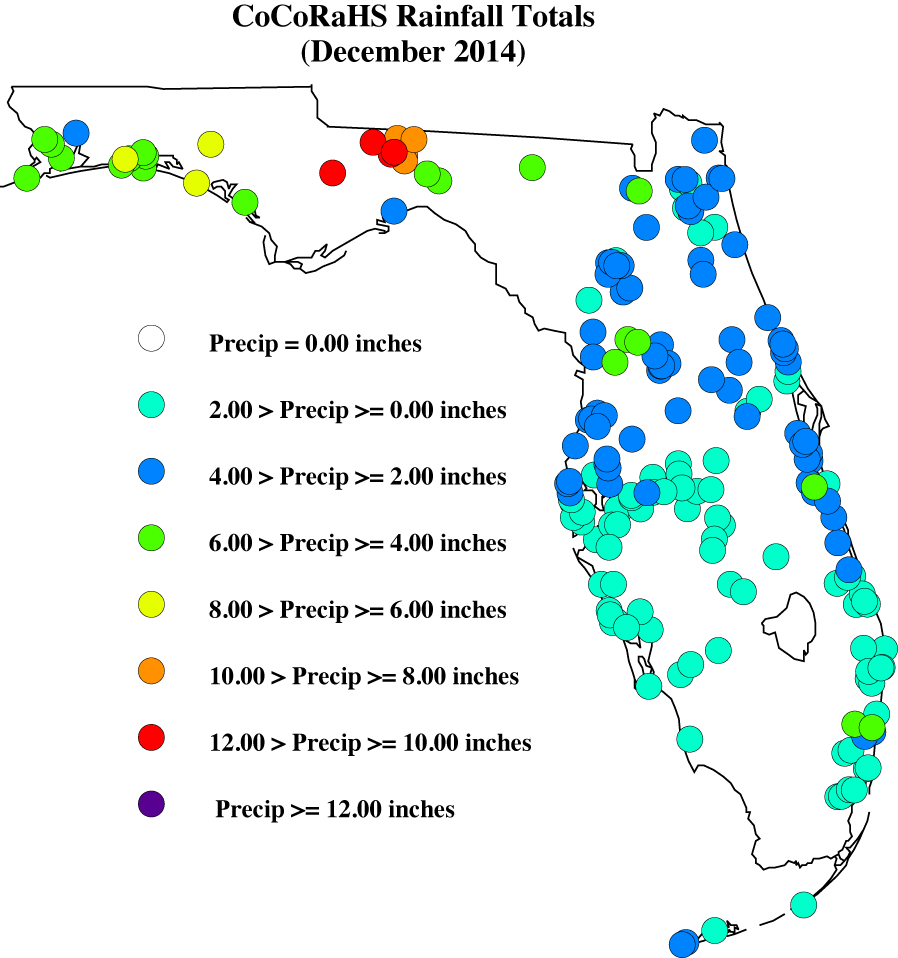
|
Current State of the Drought
At the end of November, heavy rains across portions of the Panhandle and Big Bend reduced the moderate drought (D1) conditions to abnormally dry (D0) in Gadsden, Leon, Jefferson and Wakulla counties. Dry conditions over the first part of the month of December kept drought conditions consistent across the state. When the Drought Monitor was released on the 16th of the month, the D0 conditions were removed from Gadsden, Jefferson, Leon and Wakulla counties. Unfortunately, the rains that helped ease the drought conditions that had plagued that portion of the Big Bend for months did not help the northwestern Panhandle. The D0 conditions were seen in Bay, Holmes, Jackson and Washington counties, and D1 conditions expanded from the coastal area to interior portions of Escambia, Okaloosa and Santa Rosa counties. Severe drought (D2) was introduced in Escambia and Santa Rosa counties at mid-month. On December 23rd - 24th, a strong storm system moved through the northern part of the state, dumping 3.00" to 10.00" in the Panhandle and Big Bend. The rainfall caused localized flooding in some urbanized areas and some rivers and streams to rise. In addition, the rainfall reduced some of the drought impacts in the northwestern Panhandle counties. The remainder of the state saw monthly rainfall totals slightly below normal, though no drought conditions were posted during December.
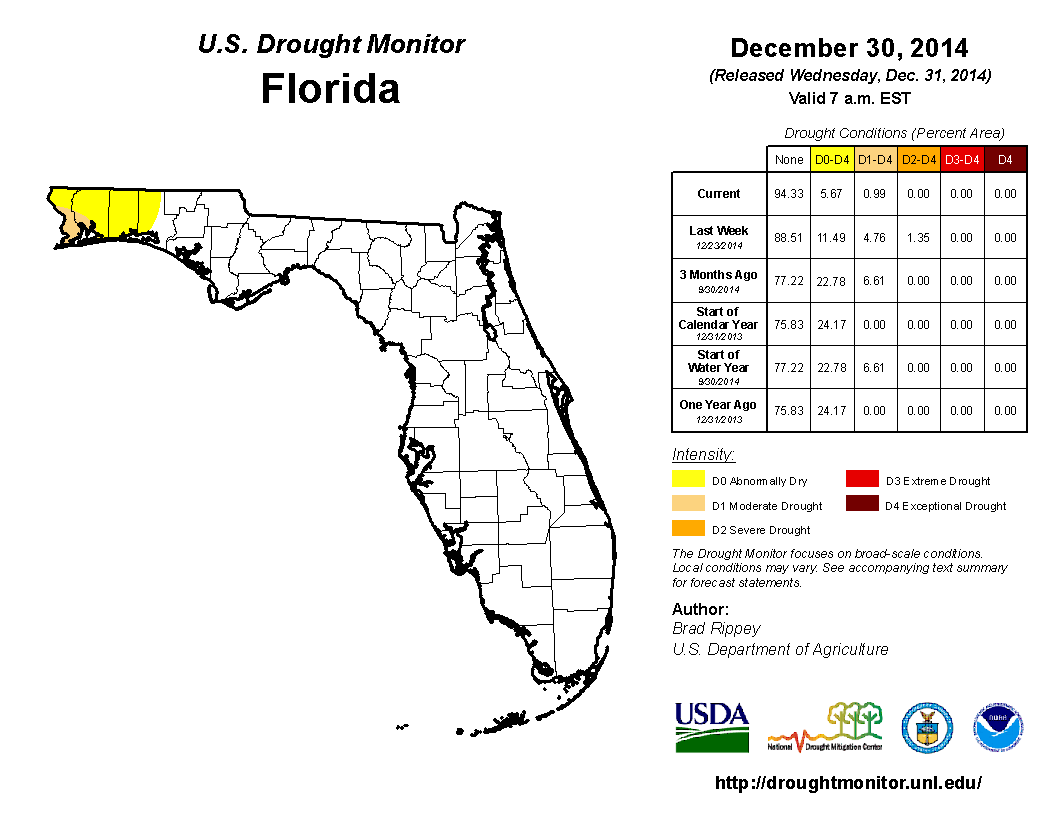
|
Odds and Ends
Make sure to check out the monthly Wx Talk Webinars offered by CoCoRaHS. Each month features a different weather related topic and gives a chance for our observers to interact with the speaker. If you are unable to attend or have missed some of the previous month's talks, you can find them archived on the CoCoRaHS YouTube site: http://www.youtube.com/cocorahs/
Make sure to like Florida CoCoRaHS on Facebook! Observers can now post comments and pictures to the wall.
|
|
|
|
 |
 |
 |
 |
 |
 |
 |
 |
 |
 |
 |
 |
 |
|
|
 |
 |
|
 |
|